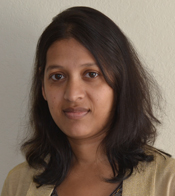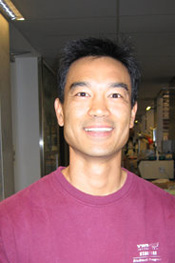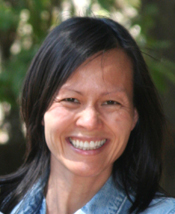Fathman Lab Members
 |
|
C. Garrison Fathman, M.D.
Dr. Fathman, Professor of Medicine and Chief of the Division of Immunology and Rheumatology at Stanford University School of Medicine, also serves as Past Chairman of the Federation of Clinical Immunology Societies (FOCIS) and Director of the Center for Clinical Immunology at Stanford (CCIS).
For more information about Dr. Fathman, visit the Lab Home Page.
 |
|
Rahima Akter
Position: Life Science Research Assistant (LSRA)
Education:
Postdoctoral: Stanford University
Graduate: M.Sc. in Experimental Medicine, McGill University, Montreal, Canada
1987-89: M.Sc. Biophysics Institute, Federal University of Rio de Janeir
Undergraduate: M.B.B.S (Bachelor of Medicine and Bachelor of Surgery), Bangladesh
Project: Role of DEAF-1 in the pathogenesis of Type-1 Diabetes Mellitus, and the role of GRAIL E3 ligase in the regulation of T-cell tolerance
Email:
 |
|
Teppei Matsumura, PhD
Position: Postdoctoral Scholar
Education:
Graduate: Ph.D., Medicine, Osaka University, Japan M.S., Biology, Kobe University, Japan
Undergraduate: B. Sc., Kobe University, Japan
Project: Understanding the mechanism of alternative splicing of Deaf1 in pancreatic lymph nodes of NOD mice, and identification and characterization of Deaf1binding partner in pancreatic lymph node and its biological mechanisms
Email:
 |
|
Jonathon Rothbard, PhD
Position: Senior Reserach Scientist
Education:
Graduate: Ph.D., Organic Chemistry, 1977, Columbia Univeristy, New York, NY
M.Phil., Organic Chemistry, Columbia University, New York, NY
M.A., Organic Chemistry, Columbia University, New York, NY
Undergraduate: B.A., Organic Chemistry, Hamilton College, Clinton, NY
Project: In collaboration with Drs. Garrison Fathman and Lawrence Steinman, exploring the utility of small heat shock proteins and amyloidogenic peptides as anti-inflammatory therapeutics to modulate the symptoms of EAE, ischemia reperfusion injury, type I diabetes, and stroke.
Email:
Luis RB Soares, PhD
Position: Visiting Scientist
Education:
Postdoctoral: Stanford University
Graduate: 1989-91: Pre-doctoral, Biophysics Institute, Federal University of Rio de Janeiro
1987-89: M.Sc. Biophysics Institute, Federal University of Rio de Janeir
Undergraduate: 1986: B.S., Biological Sciences, Federal University of Parana (Brazil)
Project: Proteome mapping of GRAIL positive endosomes by targeted in vivo labeling. Revealing cellular mechanisms underlying GRAIL function as a T cell anergy factor
Email:
 |
|
Leon Su, PhD
Position: Staff Scientist
Education:
Postdoctoral: Stanford University
Graduate: University of California, San Diego
Undergraduate: University of California, Berkeley
Project: Molecular Mechanisms of Peripheral T cell Tolerance
Email:
 |
|
Chan Whiting, PhD
Position: Staff Scientist
Education:
Postdoctoral: Stanford University; Tularik/Amgen
Graduate: University of California, Los Angeles
Undergraduate: University of California, Los Angeles
Project: Understand the molecular basis of autoimmunity with emphasis on investigating the role of GRAIL E3 ligase in regulation of T cell tolerance/nonresponsiveness Investigate the molecular mechanisms of effective immune therapies against type 1 diabetes (T1D) and other autoimmune disorders Apply ‘omics (genomic and proteomic) approaches to identifying and understanding the functions of key regulators and targets of autoimmunity
Email:
 |
|
Linda Yip, PhD
Position: Postdoctoral Fellow
Education:
Postdoctoral: Dept. of Surgery, University of California San Diego, USA
Graduate: Ph.D., Physiology, University of British Columbia, Canada
Undergraduate: B. Sc., Physiology, University of British Columbia, Canada
Project:
Type 1 Diabetes develops due to the lack of T cell tolerance to islet
antigens. T cells which recognize self-antigen are normally deleted
through central or peripheral tolerance mechanisms. Central tolerance
occurs in the thymus as developing T cells are exposed to self-antigens
expressed in medullary thymic epithelial cells. Peripheral tolerance
occurs when mature T cells circulate through the body and encounter
peripheral tissue antigens on various cells, including those of the
lymph nodes. My work focuses on the identification and characterization
of genes which regulate peripheral tissue antigen expression and peripheral
tolerance during the development of Type I diabetes.
Email:

